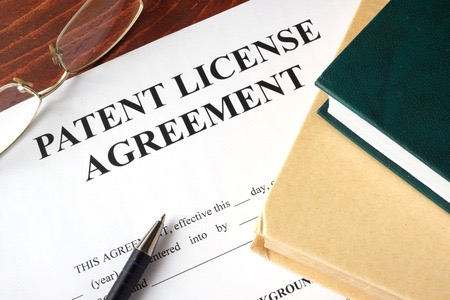 On Monday, November 26th, the Finnish telecom firm Nokia Corporation announced it entered into a patent licensing agreement with Chinese mobile consumer electronics firm OPPO. Although terms of the deal weren’t disclosed by Nokia, the company did state that under the agreement, OPPO would make payments over a multi-year period.
On Monday, November 26th, the Finnish telecom firm Nokia Corporation announced it entered into a patent licensing agreement with Chinese mobile consumer electronics firm OPPO. Although terms of the deal weren’t disclosed by Nokia, the company did state that under the agreement, OPPO would make payments over a multi-year period.
Nokia announced its quarterly earnings for 2018’s third quarter on October 25th and while the licensing division earned €351 million ($396.4 million USD) for the quarter, all of it attributable to patent and brand licensing, that total was a 27 percent decrease from the €483 million ($545.5 million USD) in net sales earned by Nokia Technologies during the third quarter of 2017. Nokia’s earning report attributed this year-over-year decrease in net sales mainly to the absence of €180 million ($203.3 million USD) worth of non-recurring catch-up licensing sales; Nokia Technologies earned “approximately zero” in such sales during the recent quarter.
An early player in the mobile phone and smartphone markets, Nokia has put more focus on marketing networking equipment infrastructure in recent years but it continues to design mobile hardware and technologies which it licenses to third parties such as OPPO. This isn’t Nokia’s first licensing agreement with a Chinese smartphone maker as the company entered into a cross-license agreement with Xiaomi last summer which granted either company access to technologies covered by standard essential patents (SEPs) in the cellular sector. Nokia maintains a strong commitment to developing new technologies and the third quarter of 2018 saw the company spend €1.1 billion ($1.2 billion USD) on research and development, spending more than half of its gross profit from the quarter on R&D.
OPPO may not receive the same kind of attention that its domestic rivals Xiaomi and Huawei receive, but it has become a major competitor in the Chinese smartphone market in recent years. OPPO had the greatest market share of smartphone makers in terms of Chinese sales during 2016 when the company shipped 78.4 million units to achieve a 16.8 percent market share within the country. That total number of units shipped represented a 122.2 percent increase from the previous year when OPPO shipped 35.3 million units. OPPO has also recently become a major player in the global smartphone market, shipping 29.4 million units during the second quarter of 2018 alone, the fifth highest unit shipment total of any smartphone maker including Samsung and Apple. This gave OPPO an 8.6 percent share of the global smartphone market during the second quarter and put it not too far behind its rival Xiaomi, which shipped 31.9 million units during the second quarter.
The recent announcement of Nokia’s patent deal with OPPO isn’t likely to be the only such licensing deal signed by OPPO in the months to come according to an exclusive interview with OPPO’s Director of IP Adler Feng published by IAM. Also in late November, IAM published data regarding OPPO’s patent application filing trends showing that, while the company filed barely any patent applications in 2011, OPPO filed around 5,000 patent applications in 2016. A total of 16,826 IP assets, the vast majority of OPPO’s IP holdings, are filed in China and less than 1,000 assets have been filed in any other jurisdiction, including global filings with the World Intellectual Property Organization (WIPO).
Both OPPO’s in-house R&D and its licensing deals appear to be helping it attain the status of a strong market mover where introducing new technologies is concerned. It’s been reported that OPPO will release smartphones this December featuring a new generation of its patented voltage open loop multi-step constant-current charging (VOOC) technology providing incredibly fast charging times which is being marketed as SuperVOOC. OPPO’s R19 smartphone, set to be released in 2019, is expected to be the world’s first smartphone running MediaTek’s Helio P80 chipset which is designed for enhanced artificial intelligence performance.

![[IPWatchdog Logo]](https://ipwatchdog.com/wp-content/themes/IPWatchdog%20-%202023/assets/images/temp/logo-small@2x.png)

![[Advertisement]](https://ipwatchdog.com/wp-content/uploads/2024/03/IP-Copilot-Apr-16-2024-sidebar-700x500-scaled-1.jpeg)
![[Advertisement]](https://ipwatchdog.com/wp-content/uploads/2024/04/Patent-Litigation-Masters-2024-sidebar-early-bird-ends-Apr-21-last-chance-700x500-1.jpg)

![[Advertisement]](https://ipwatchdog.com/wp-content/uploads/2021/12/WEBINAR-336-x-280-px.png)
![[Advertisement]](https://ipwatchdog.com/wp-content/uploads/2021/12/2021-Patent-Practice-on-Demand-recorded-Feb-2021-336-x-280.jpg)
![[Advertisement]](https://ipwatchdog.com/wp-content/uploads/2021/12/Ad-4-The-Invent-Patent-System™.png)







Join the Discussion
No comments yet.